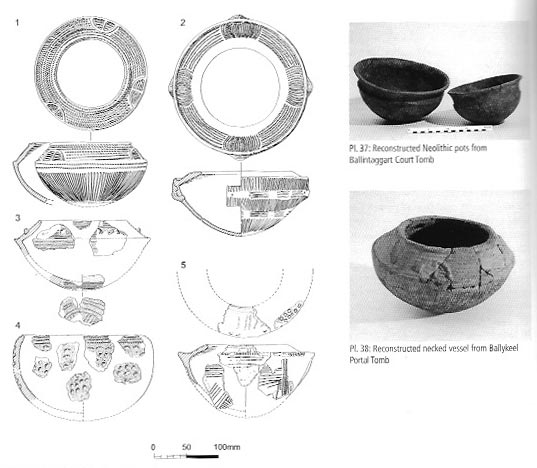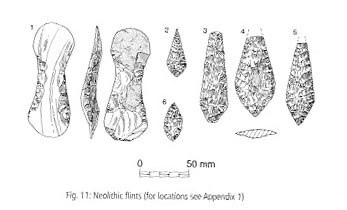Neolithic Ireland: The first farming communities 4000-2500 BC
The Neolithic period is marked by substantial changes in settlement pattern, technology, method of burial and the organisation of society. An economy based on hunting, fishing and gathering is replaced by one that focuses on the rearing of domestic livestock and the cultivation of cereals. After 4000BC, housing became more permanent, clay-built pots were used and the range of available equipment increased to include tools for clearing forests and reaping and processing grain. Large stone structures known as megaliths were built to serve as religious centres and to house the dead. The spread of megalithic tombs suggests that these farming communities were based in upland areas, living in small groups in rectangular houses. The analysis of contemporary pollen demonstrates that prior to the Neolithic period, Ireland was densely wooded. By 3900BC, woodland had declined and was replaced by cereals and grass indicating that farmers had cleared the woodland for growing crops and raising cattle and pigs. These clearances were sporadic and there are periods of forest regeneration throughout this age.
Navan Fort in the Neolithic Age

Navan Fort in the Neolithic Age: Examples of Neolithic pottery from Co. Armagh [copyright NIEA]

Navan Fort in the Neolithic Age: Examples of Neolithic Flints found in Co. Armagh [copyright NIEA]
